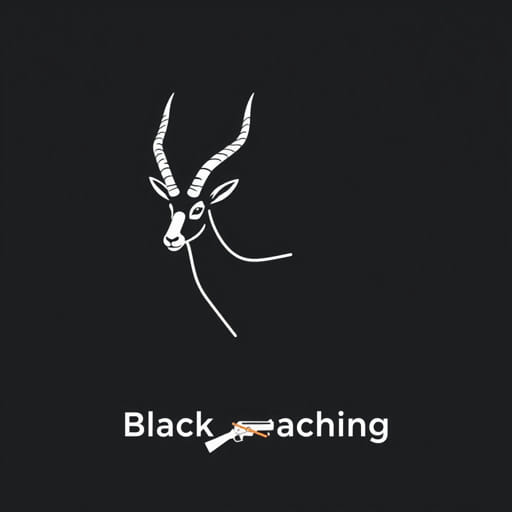The Blackbuck poaching case is one of the most discussed legal and environmental cases in India involving the illegal hunting of a protected species. The case gained massive public attention due to the involvement of several well-known Bollywood actors and has become a significant example of how wildlife protection laws are enforced in the country. But beyond the headlines, what is the real meaning of the Blackbuck poaching case, and why does it matter? To understand its full significance, it is essential to look into the legal, environmental, and societal aspects surrounding it.
Understanding What a Poaching Case Means
Poaching is the illegal hunting, capturing, or killing of wildlife. It is considered a serious offense in many countries, especially when it involves endangered or protected species. A poaching case involves legal proceedings where individuals are tried for violating wildlife protection laws. In the case of the Blackbuck, the animal is listed under the Wildlife Protection Act of 1972 in India, making it illegal to hunt or harm it.
What Is a Blackbuck?
The Blackbuck (Antilope cervicapra) is an antelope species native to the Indian subcontinent. Recognizable by its spiral horns and black-and-white markings, the Blackbuck is considered sacred in some Indian communities and is protected under Schedule I of the Wildlife Protection Act. This means it is afforded the highest level of legal protection due to its endangered status.
The Blackbuck Poaching Case Explained
The Blackbuck poaching case refers to the legal proceedings and controversy surrounding the alleged killing of two Blackbucks in 1998 near Jodhpur, Rajasthan. Several prominent Indian film actors were accused of poaching while filming in the area. The case went on for over two decades and included multiple appeals, court appearances, and verdicts.
Key Facts of the Case
- The incident occurred in October 1998 during the shooting of a movie in Rajasthan.
- Two Blackbucks were reportedly killed near a village on the outskirts of Jodhpur.
- Actors and other crew members were alleged to have hunted the animals using firearms and vehicles.
- Eyewitness accounts and forensic evidence led to the filing of charges under the Wildlife Protection Act.
Legal Charges and Laws Invoked
- Wildlife Protection Act, 1972: Protects endangered species like the Blackbuck.
- Indian Penal Code (IPC): Sections for criminal conspiracy and unlawful possession of arms.
- Arms Act: Allegations were made about the use of unlicensed firearms during the hunt.
Under Indian law, poaching a Schedule I animal like the Blackbuck can lead to imprisonment for up to 7 years, along with fines.
Public and Media Attention
What made the Blackbuck poaching case particularly famous was the involvement of high-profile individuals. The media coverage brought the issue of wildlife crime into public discourse, making it not just about celebrities but also about the effectiveness of the legal system and the value of wildlife conservation.
Celebrity Involvement
Several Indian film stars were implicated in the case, which drew nationwide attention and polarized public opinion. Supporters of the accused argued that the case was prolonged unfairly due to their fame, while environmental advocates saw it as an opportunity to set a precedent for accountability, regardless of social status.
Conservation and Cultural Significance
Blackbucks hold both ecological and cultural importance in India. In some regions, they are revered and even protected by local communities. Their populations have declined due to habitat loss, hunting, and competition with livestock. The poaching case emphasized the need for strong legal protection and public awareness regarding the conservation of species that are on the brink of extinction.
Ecological Role
- Maintaining balance in grassland ecosystems.
- Providing prey for predators in the food chain.
- Serving as an indicator of ecosystem health.
Religious and Cultural Aspects
In certain Indian communities, particularly the Bishnoi sect in Rajasthan, the Blackbuck is considered sacred. The Bishnoi people played a key role in bringing the poaching incident to light and testified in court, emphasizing their commitment to wildlife protection.
Impact on Wildlife Laws and Enforcement
The Blackbuck poaching case served as a wake-up call for the need to reinforce wildlife laws and increase awareness about animal rights and biodiversity. It also shed light on the gaps in the Indian legal system concerning the length of court trials and the difficulty in convicting individuals based on circumstantial evidence.
Lessons Learned
- Need for faster legal processes in environmental cases.
- Importance of forensic science and expert testimony in wildlife crimes.
- Greater responsibility for celebrities and public figures in setting ethical examples.
- Increased pressure on government bodies to enforce wildlife laws more strictly.
The Meaning Behind the Blackbuck Poaching Case
The Blackbuck poaching case goes far beyond a single legal event. It represents a broader issue of how humans interact with wildlife and how society upholds the rules designed to protect vulnerable species. The meaning of the Blackbuck poaching case lies in its role as a symbol of the clash between celebrity privilege and environmental justice, between outdated attitudes and evolving legal standards. It serves as a reminder that wildlife belongs to the nation and must be preserved not only for biodiversity but also for future generations to experience the richness of nature.
